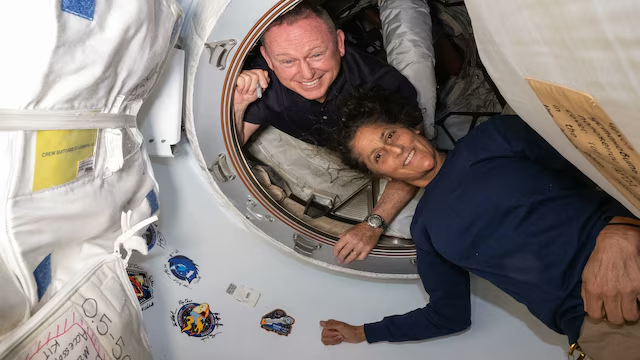NASA’s Urgent Efforts to Return Astronauts from ISS Amid Boeing Starliner Issues
NASA is racing against the clock to safely bring back astronauts Sunita Williams and Butch Wilmore from the International Space Station (ISS) following unexpected technical problems with the Boeing Starliner spacecraft. The spacecraft, which docked with the ISS on June 13, 2024, has faced several issues, creating a tight deadline for resolution before the upcoming Crew-9 mission. The Starliner encountered significant setbacks shortly before docking with the ISS, including the unexpected shutdown of five out of its 28 thrusters and the discovery of five small helium leaks in the service module. These issues are critical as they affect the spacecraft’s ability to safely undock and return to Earth. Steve Stich, NASA’s commercial crew program manager, has indicated that a precise return timeline for Williams and Wilmore is still being determined. Given that the thrusters and helium systems are vital for a safe re-entry, any malfunction poses serious risks to the astronauts’ safety. Adding to the urgency, the ISS needs to clear docking ports for the upcoming Crew-9 mission, which is set to launch no earlier than August 18, 2024. The Crew-9 mission will ferry NASA astronauts Zena Cardman, Nick Hague, Stephanie Wilson, and Roscosmos cosmonaut Alexander Gorbunov to the ISS aboard a SpaceX Dragon spacecraft. If the Starliner cannot be repaired in time, NASA may need to consider alternative options for returning Williams and Wilmore, potentially using a SpaceX Dragon capsule. This contingency plan underscores the complexity and urgency of the situation. On July 10, 2024, Sunita Williams and Butch Wilmore held a press conference from the ISS, offering insights into their extended stay and the ongoing efforts to resolve the Starliner issues. Despite the challenges, both astronauts have maintained positive spirits. Williams shared a fascinating observation of a developing weather phenomenon, recounting how she captured images of a storm off the west coast of Africa that later intensified into Hurricane Beryl impacting the Texas coast. “I took some video of it and sent it down,” Williams noted, reflecting on the rapid evolution of the storm. Williams also highlighted the rigorous preparations they underwent, including extensive testing of emergency equipment and safe havens upon reaching the ISS. Commander Wilmore expressed confidence in their safe return, emphasizing ongoing thruster testing and readiness to adapt procedures based on new data. For the latest updates on NASA missions and more space-related news, visit UpToSkills.com and follow us on Google News, Facebook, Twitter, and WhatsApp. Subscribe to our weekly space newsletter for the latest news, insights, and analysis delivered directly to your inbox.NASA’s Urgent Mission: Returning Astronauts from the ISS Amid Starliner Challenges
Technical Glitches and Tight Deadlines
Potential Alternatives for Astronaut Return
Updates from Space
Stay Updated
Related Articles:





